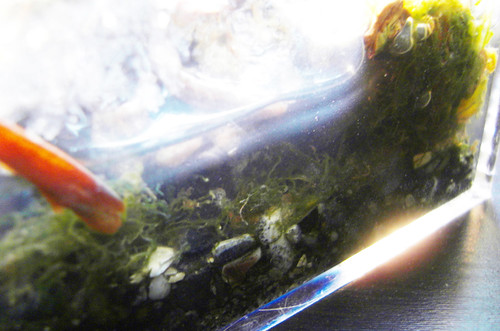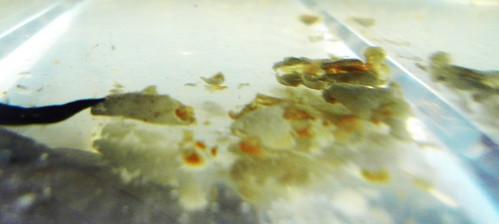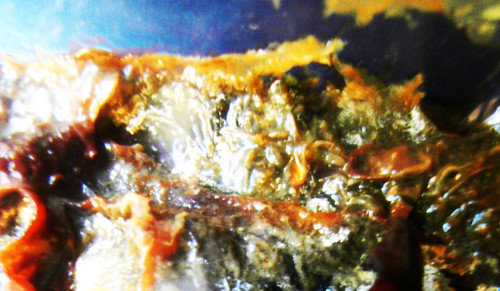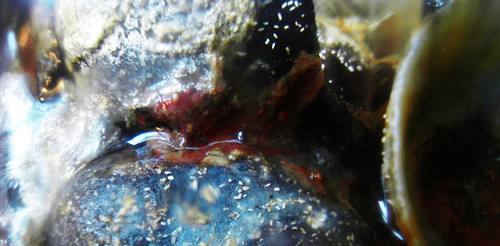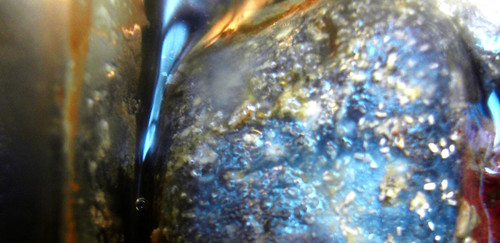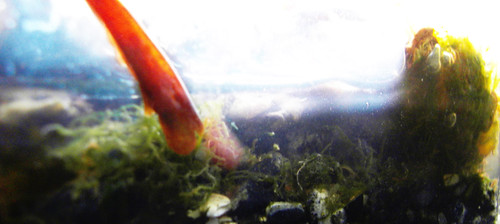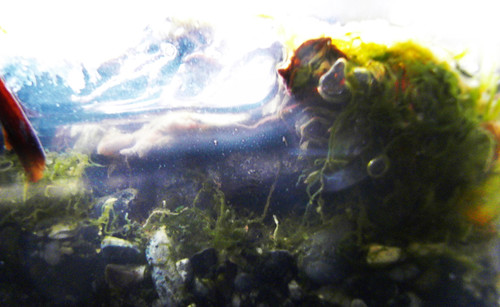
The scenario: The
casa diatom is evolving from a grow-your-own-diatoms
aquarium to an adaptable system that made of bio-degradable material. The part-machine part-living-creature is self-assembly and once it is matured, it will be hosting the existing or new born diatoms and acts as a underwater cultivating medium, be it in a lake, ocean, reservoir, pond, pool or any aqueous environment. It is a self-sustaining 'housing project' for diatoms, where they experience life and death. Like any other living creatures on earth, in an eco-chain, the dead always contributes to the spring of new life. In this case, frustule (diatom's skeleton) will be 'fertilizing' the new microchips or solar panels. The medium that nurtures diatoms becomes a factory for intelligent technologies, by transfering dead diatoms from the 'morgue' and 'reincarnating' them into part of the new forms, gives birth to a new 'life form', by accepting the fact that future
microchips or
solar panels could be manufactured naturally with certain controlled systems in place.
Archigram movement in the 60's was truly inspiring but apparently human race did not move on from industrial age since then. It is a shame that we are too arogant to blend into nature law and ignored the wisdoms that being showcased by nature. David Greene's utopian concept of a cybernetic forest sounds more convincing than any other futuristic robotic cities ever proposed.
"I like to think (right now please!) of a cybernetic forest filled with pines and electonica where deer stroll peacefully past computers as if they were flowers with spinning blossoms."
-David Greene, Gardener's Notebook (Archigram)
Through their projects and proposals, they predicted a blurring of boundaries and a convergence of technologies. They realized that these technologies would begin shaping and altering the world in ways that they could only begin to imagine. Undoubtedly, the invention of internet has blurred the virtual-actual phenomenon, with the breakthroughs in genetic and biotech, perplexing situation between nature and technologies is expanding its territory from GM foods to superhuman. It is time to back to basic and rethink the harmonious relationships between man-made technologies and nature, where everything seems a little more sensible...
 1st Place 2008 : Marine diatoms, Pleurosigma (200x) taken by Michael Stringer, Westcliff-on-Sea, UK. Stringer is not a microscopist by profession, but has been interested in diatoms for over 60 years, collecting them on Two Tree Island in the Thames Estuary, UK.
1st Place 2008 : Marine diatoms, Pleurosigma (200x) taken by Michael Stringer, Westcliff-on-Sea, UK. Stringer is not a microscopist by profession, but has been interested in diatoms for over 60 years, collecting them on Two Tree Island in the Thames Estuary, UK.

